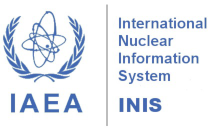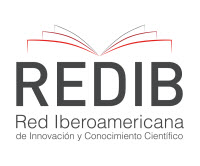Use of clays in the treatment of radioactive aqueous waste generated at the CDTN
DOI:
https://doi.org/10.15392/2319-0612.2024.2735Keywords:
Radioactive aqueous waste, treatment, precipitation, sorptionAbstract
Radioactive waste is generated in various activities carried out by industry, whether focused on agriculture, energy, health, or research development. CNEN defines it as all materials with radionuclides above clearance levels, generated by human action, whose use is inappropriate or not foreseen. Proper management is essential to ensure the population's safety, workers occupationally exposed to radiation, and the environment. The research by institutes that develop nuclear technologies generates solid and liquid radioactive waste. To reduce their volume, solid waste is compacted or immobilized in a cement matrix, and liquid waste is treated in such a way as to concentrate the radionuclides present and separate them from the liquid part to release this liquid part in the environment, according to the acceptance criteria of CNEN standard. There are several ways to treat liquid waste, such as precipitation, sorption, ion exchange, membrane filtration, and evaporation. In this work, the precipitation followed by sorption in commercial clays of some liquid radioactive waste generated through research carried out at the Nuclear Technology Development Center was evaluated to reduce the radionuclides content in the aqueous part and concentrate the radionuclides in the clays used.
Downloads
References
[1] National Nuclear Energy Commission (Brazil). CNEN NN 08.02: Radiation protection and safety requirements for physically protecting ionizing radiation sources. Brasília: CNEN, 2024. Available at: http://www.cnen.gov.br/seguranca/normas/NN-08-02. Accessed on: August 27, 2024.
[2] National Nuclear Energy Commission (Brazil). CNEN NN 6.09: Transportation of radioactive materials: safety requirements. Available at: http://www.cnen.gov.br/seguranca/normas/NN-06-09. Accessed on August 27, 2024.
[3] SOUZA, Daiane Cristini Barbosa de. Desenvolvimento de um método para gerenciamento de rejeitos radioativos no laboratório de produção de fontes de iodo-125 utilizadas em braquiterapia. 2018. Tese de Doutorado. Universidade de São Paulo.
[4] Freire,C.B.; Tello,C.C.O.Rejeito e Gerência de Rejeitos Radioativos.Revista Brasileita de Pesquisa e Desenvolvimento, v. 9, p. [43]-[39], 2007.
[5] National Nuclear Energy Commission (Brazil). CNEN NN 5.01: Licensing of radioactive facilities. Available at: https://www.cnen.gov.br/seguranca/normas/NN-05-01. Accessed on August 27, 2024.
[6] FREIRE,C.B.; Tello,C.C.O. Study of cesium and strontium sorption in national clays for their use as a barrier in the radioactive waste repository. In: INTERNATIONAL NUCLEAR ATLANTIC CONFERENCE - INAC 2007, São Paulo, Brazil. Anais ASSOCIAÇÃO BRASILEIRA DE ENERGIA NUCLEAR - ABEN, 2007.
[7] [VOGEL], [Arthur /I]. [Chemistry qualitative analytics]. [São Paulo]: [Mestre Jou], [1981]. p. [81]-[91]. ISBN [85-87068-01-6].
[8] [POSSIGNOLO], [G. A/ TAVARES], [J. G. G/ OLIVEIRA], [T. M. R/ XAVIER], [J. A/ BENDASSOLLI]. [Emprego da precipitação química como técnica de tratamento de resíduos laboratoriais contendo flúor e cobre]. [Revista Analytica], [Florianopolis], v. [42] p. [94] – [107], 2009.
[9] DÁVILA, Ivone Vanessa Jurado. Remoção de Vermelho Reativo 120 em solução aquosa usando hidroxicarbonatos de Mg-Al, Mg-Fe e Mg como sólidos sorventes. 2016. 87 f. Dissertação (Mestrado) - Curso de Engenharia, Universidade Federal do Rio Grande do Sul, Porto Alegre, 2016.
[10] SILVA, Darciely Lindalva da. Estudo da sorção de tensoativos orgânicos em argilas bentoníticas. 2013. 140 f. Dissertação (Mestrado em Ciência e Engenharia de Materiais) - Universidade Federal da Paraí¬ba, João Pessoa, 2013.
[11] Journal Article reference example: DA SILVA.; DA SILVA, A.V.; D.L.; FERREIRA, H. S. . Estudo da sorção de tensoativos orgânicos em argilas bentoníticas. Cerâmica, São Paulo v. 62, p. 294-304, 2016. DOI: https://doi.org/10.1590/0366-69132016623632012
Downloads
Published
Issue
Section
Categories
License
Copyright (c) 2025 Hellen Késia Santos de Souza, Maria Judite Afonso Haucz, Carolina Braccini Freire

This work is licensed under a Creative Commons Attribution 4.0 International License.
Licensing: The BJRS articles are licensed under a Creative Commons Attribution 4.0 International License, which permits use, sharing, adaptation, distribution and reproduction in any medium or format, as long as you give appropriate credit to the original author(s) and the source, provide a link to the Creative Commons license, and indicate if changes were made. The images or other third party material in this article are included in the article’s Creative Commons license, unless indicated otherwise in a credit line to the material. If material is not included in the article’s Creative Commons license and your intended use is not permitted by statutory regulation or exceeds the permitted use, you will need to obtain permission directly from the copyright holder. To view a copy of this license, visit http://creativecommons.org/licenses/by/4.0/






















